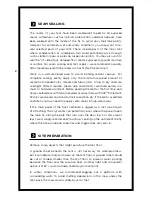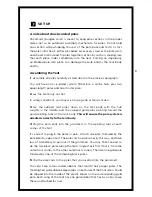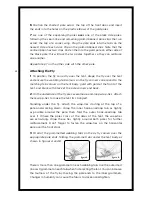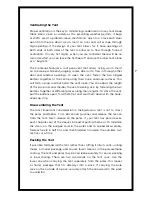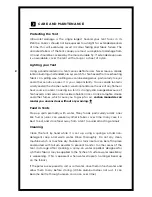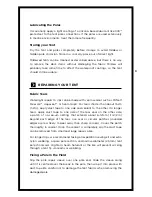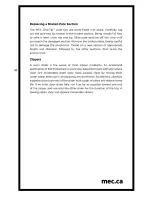
CARE AND MAiNTENANCE
protecting the Tent
Ultraviolet damage is the single largest hazard your tent faces in its
lifetime. Fabrics should not be exposed to sunlight for extended periods
of time; this will eventually result in colour fading and fabric failure. The
uncoated fabrics of the tent canopy are most susceptible to damage from
UV and should be covered by the more durable fly. If extended exposure
is unavoidable, cover the tent with a tarp or a sheet of nylon.
lighting your Tent
Using a candle lantern in a tent carries definite risks. Never leave a candle
lantern burning unattended; always watch for fire hazard from overheating
fabrics or spilling wax. Spilling wax can be dangerous, particularly to eyes
and other sensitive areas. It is your responsibility to use candle lanterns
wisely and with extreme caution: we do not endorse the use of any flame or
heat source in a tent. Cooking in a tent is strongly discouraged because of
fire hazards and carbon monoxide inhalation risks. Unlike campfire smoke
and other fumes, which cause you to gasp for air,
carbon monoxide can
render you unconscious without any warning.
Food in Tents
Mop up spills promptly with water. Many foods, particularly acidic ones
like fruit or juices, can weaken synthetic fabrics over time. In any case it is
best to eat and store food away from a tent to avoid attracting animals.
Cleaning
Clean the tent by hand while it is set up, using a sponge, a mild non-
detergent soap, and warm water. Rinse thoroughly. Do not dry clean,
machine wash, or machine dry. Stubborn stains like tar can be left in place
and dusted with talcum powder to prevent transfer to other areas of the
tent in storage. After cleaning, a spray-on water repellent designed for
synthetic fabrics may be applied to the flysheet if surface water repellency
is weakening. (This is apparent when water droplets no longer bead up
on the fabric.)
If the poles are exposed to salt or salt water, rinse them in fresh water and
allow them to dry before storing. (While aluminum does not rust, it can
become brittle through unseen corrosion over time.)
Summary of Contents for Frontenac
Page 10: ......


